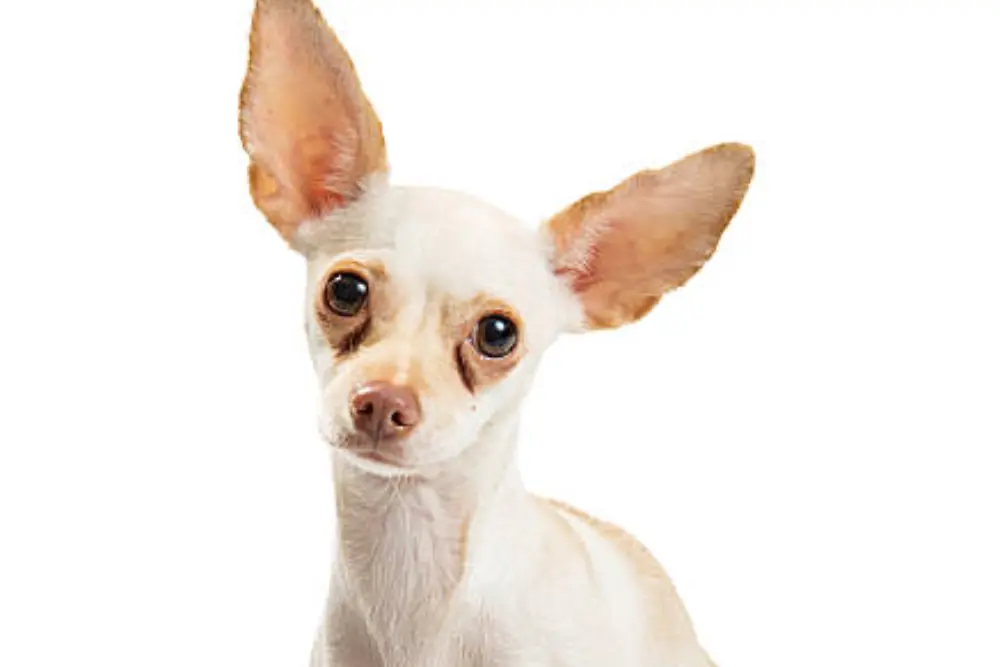
What Foods Cause Tear Stains In Dogs?
In dogs, tear stains appear as reddish-brown streaks around the eyes and are more noticeable on white or light-colored dogs. They occur when a dog’s tears pool instead of draining away normally or when the dog produces excessive tears.
Tear stains on a dog’s face are not usually painful or harmful, but they can be an indication of a more serious problem.
If you want to get rid of your dog’s tear stains and keep them from returning, you need to figure out what foods cause tear stains in dogs.
What are Tear Stains in Dogs?
Tiny molecules make most tear stains of dye called porphyrins. Porphyrins are molecules that contain iron. The body produces them when it breaks down red blood cells. Porphyrins are mostly eliminated through bile and the intestinal tract, but dogs also get rid of many porphyrins through their tears, saliva, and urine.
Stains appear when tears or saliva with porphyrin sit on white fur for a long time. When the sun shines on these iron-related stains, they get darker.
All dogs make porphyrin, but porphyrin stains are most obvious on dogs with light fur. If a white dog licks or chews on his leg, you may have observed that the hair turns an iron-brown color.
Can a Dog’s Food Cause Tear Stains?
Answer in a word: yes.
What exactly do we mean when we talk about tear stains on dogs? Under a dog’s eyes, the dark brown or reddish marks extend from the inner corners down the dog’s facial outlines. Porphyrin, a pigment, accumulates and causes stains. Yet, a yeast infection is another possible cause of their discoloration.
The most common causes of tear stains on dogs are an overactive tear gland or poor tear drainage. This is referred to as epiphora.
Epiphora has many known causes, including stress and unhealthy lifestyle choices like eating. Dogs’ allergies to specific foods or using plastic bowls for food and water can also result in tear staining.
What Foods Cause Tear Stains in Dogs
Take into account the protein source in your pet’s diet. Iron-rich foods like red meat have been linked to tear staining in some pets. If your pet has a history of tear stains, you may want to try eliminating this to see if it helps. Because their body has to work harder to break down the extra iron and magnesium, eating red meat might cause tear staining.
This may exacerbate liver disease in affected pets. Porphyrin causes brown tear stains, and as we’ve seen, too much iron in the diet can cause it to accumulate.
Make sure your pet has access to quality drinking water. Iron and magnesium are commonly found in municipal water, especially well water. As was previously indicated, they aid in the formation of porphyrins. Hence, if you want to treat or avoid tear stains in your pet, filtered water is your best bet.
What Food Ingredients Cause Tear Stains
Low-quality dog diets high in fillers and artificial ingredients are the main cause of canine food allergies.
Corn and wheat are commonly used as fillers in low-quality dog meals. Epiphora, or excessive tear production, can result from an allergic reaction to these food ingredients. On the other hand, they can cause gastrointestinal discomfort in the dog, resulting in tears.
Allergies are a common side effect of consuming foods with added artificial flavorings and colors. Problems, such as tear staining on your dog, are more likely to develop with a product if it has a lot of artificial ingredients.
Many companies add preservatives to their products to extend the life of their products so that they can be kept on store shelves for longer. But, like fillers, these preservatives might trigger an allergic reaction and produce excessive tear.
What Breeds are Prone to Tear Stains?
Veterinarians say that any dog, regardless of breed or color, is susceptible to tear stains, though they are more noticeable on white and light-colored dogs.
This is more of a problem in some dog breeds than others. Because of their facial form, dogs with short muzzles (brachycephalic, like Maltese and Shih Tzus) are more likely to have tear staining.
“The shape of the muzzle and the placement of the eyes may hinder tears from draining away from the eye via the tear duct.”
Why do Dogs Have Tear Stains?

Tear stains on a dog’s face are typically the result of either an overabundance of tear production or an obstruction in tear drainage. If you discover tear stains for the first time, it’s crucial to take your pet to the vet to rule out serious medical conditions or infections.
Potential medical reasons
Glaucoma is a potentially blinding eye disease that results from a buildup of pressure inside the eye.
Discharge from the eye can indicate an eye infection caused by bacteria, viruses, or parasites.
Inflammation of the conjunctiva, or the lining of the eye, causes mucus, pus, or discharge.
The eye on the affected side of the head may experience increased tearing as a result of the infection in the ear.
An ingrown eyelash has grown back into the natural lash line rather than growing out.
Entropion is when the eyelid turns inward, resulting in irritation from the lashes pressing against the eye.
How to Reduce Tear Stains in Dogs
Your vet will prescribe the appropriate medication if your dog’s tear stains have a medical reason, like an infection. Eyelid conditions like entropion may require surgical intervention to correct.
Removing the offending substance should alleviate the problem if allergies or irritants are to blame for excessive tearing, removing the offending substance should alleviate the problem.
If an allergy cannot be eliminated, antihistamines may be required. If your dog has developed an allergy, switching to a high-quality, species-appropriate, healthy dog food formulated for dogs with food sensitivities or allergies may help.
Permanent mechanical causes need care. Cleaning the dog’s face thoroughly regularly is the best way to avoid tear stains. Tears and facial discoloration can be avoided by wiping the face with a warm, damp cloth at least twice daily.
To prevent hair from irritating the eye, it is important to trim the region surrounding the eyes. This eliminates the possibility of additional yeast infections by drying up the moisture left by tears. Regular grooming may be necessary if you can’t clip your dog’s hair.
If your dog has tear stains behind its eyes, you can use organic, unrefined coconut oil to create a soft, water-repellent coating to remove the stains and preserve the skin. Avoid using plastic bowls for food and water, as they break easily and might harbor bacteria that can cause skin irritation. Instead, opt for porcelain, glass, or stainless steel.
How do I Get Rid of My Dogs Tear Stains Naturally?
Using warm water and cotton pads to wipe the area is the most widely recommended method for removing canine tear stains naturally. A diluted boric acid solution, such as a contact lens cleaning solution, may effectively remove the stains. Many alternative methods for eliminating canine tear stains are offered, but many of them involve the use of potentially harmful chemicals.


